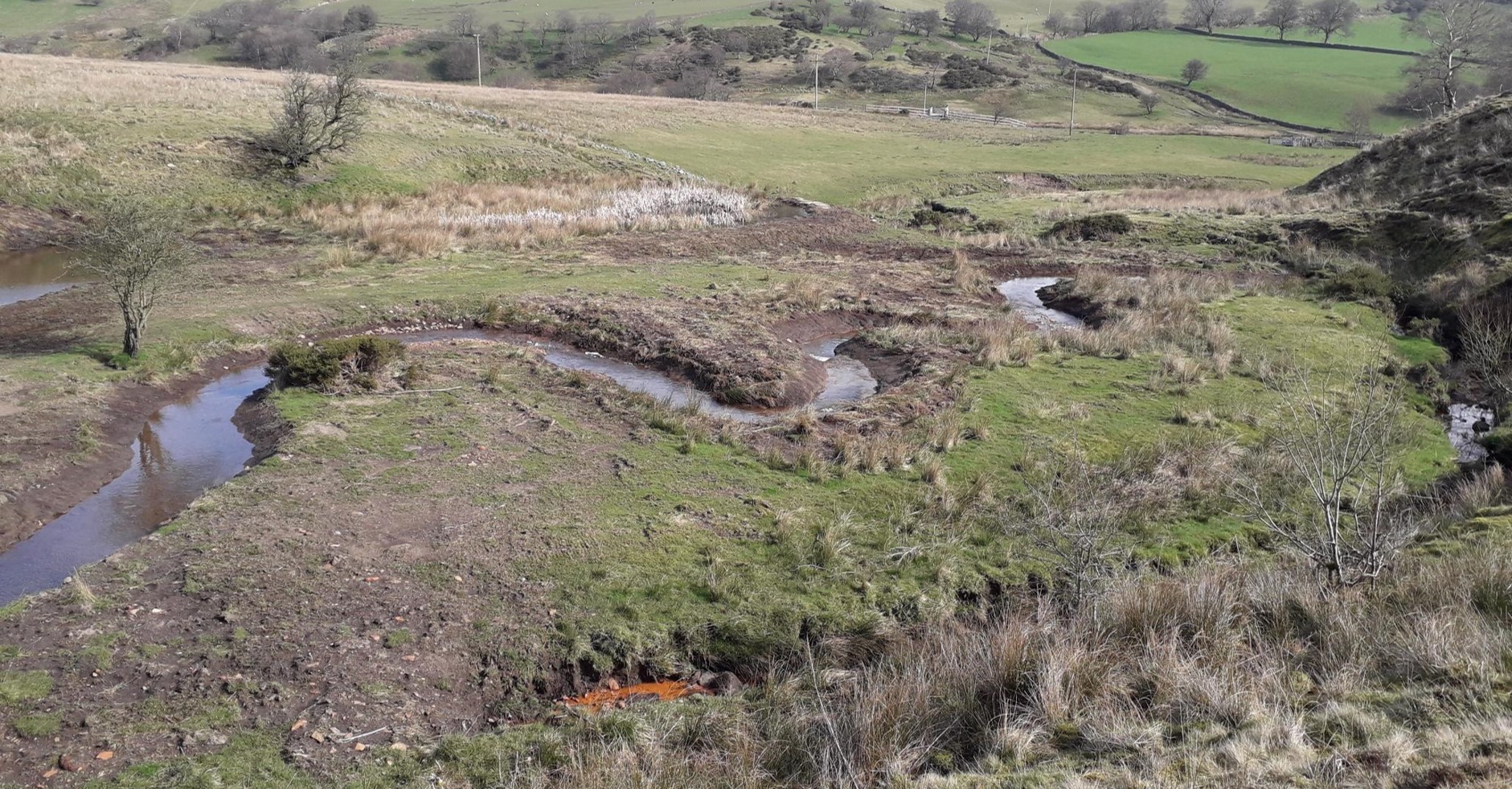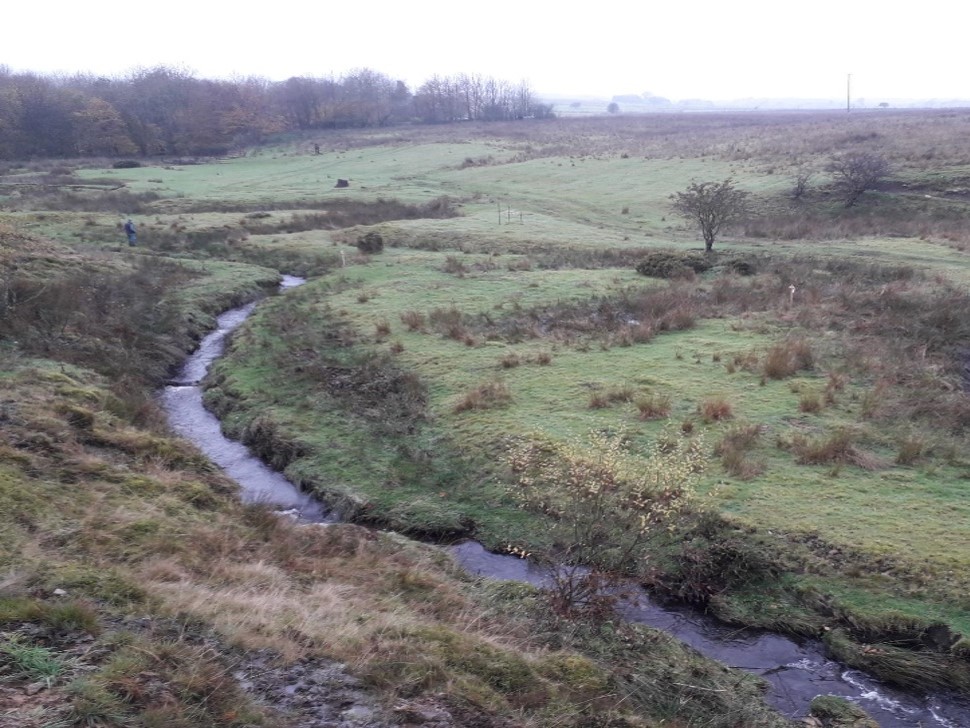Water / Case studies
# Rewiggling and woody debris at High Ash Farm
In the 1920s, the tributary of the river Manifold that flows through High Ash Farm near Longnor was straightened and rerouted along a field margin, and field drains were installed. Through the South West Peak Landscape Partnership, the river has been re-meandered by excavating the original channels, then blocking the straightened section using timber and earth bunds. There are now new gravel beds, and the river floods the surrounding area during heavy rainfall.
Tree felling into the stream created log jams of interlocking branches that wouldn’t be dislodged during high flows. The trees were back-tethered to their stumps using wire rope and cable clamps.
The work to the river meant 500 native white-clawed crayfish (opens new window) could be reintroduced.
A new pond and wader scrapes have been created, breaking up the herring-bone drainage.
Land Drainage Consent and a Felling Licence were needed and the Peak District National Park Authority was consulted. Contractors were used, at a total cost of £8,000 (2019).

